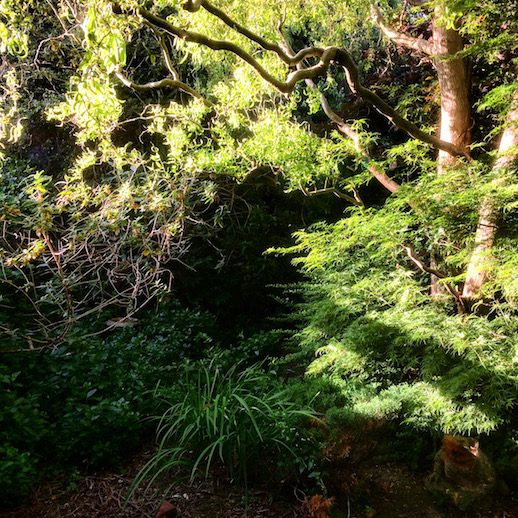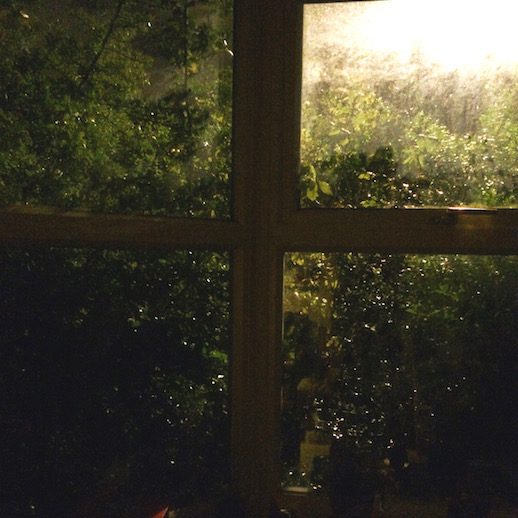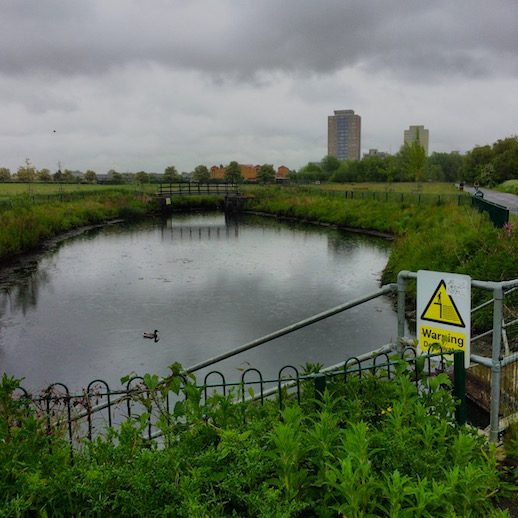Words and pictures: Luke Turner
How few buildings respond to our echoes. We trace patterns across the layers of the city, scattering energy from our interactions among trails of microscopic particles, hair and skin cells, a slipstream for forensics. Much as we might ascribe memories or sentiment to place, few can dissolve from brick and concrete, plaster and glass, into light. Sometimes though a quiet magic exists in the most ordinary spots, drawn there by a kindly soul.
147 Tower Gardens Road was such a secret temple of respite, hiding behind red bricks and a privet hedge with a mind of its own. It existed under the munificent watch of Ian Johnstone, artist, puckish Mr Todd, permaculturalist and, for the later years of their existence, affiliate of otherworldly cult musicians Coil those uncouth magicians of the sacred and profane. To Ian, 147 Tower Gardens Road was more than the place in which he existed. In repeated acts of kindness, he opened its suburban door to many who, beaten down by exhausted love in an increasingly cold and gilded city, had nowhere else to go.
I was one of those to whom Ian offered sanctuary, in a back room of the house guarded by the goddesses and feathered mammals on the paintings of artist and student of the occult, Austin Osman Spare. It was a self-built cave, dark wood everywhere, ivy trying to creep through the window that it darkened. I slept in that room like I have never slept before, and I’d be awakened by the rustling of nesting birds as night melted away from the trees, shrubs and perennials that Ian had planted in the back garden. The twisted willow, acer, irises, ceanothus, papery white peonies and a bay at the back on the edge of the park were as much a part of the house as Ian and the Spares, pleasingly hefty brass cocks, taxiderms, rusted ephemera, his sculpted silver horse leg plinths or disco wigs inside.
Around this menagerie, Tottenham got on with its business loudly, the buses sluggish up the old Roman Road, now the A10. Walking was a better way of getting around, through Lordship Rec where every day a hundred black crows patrolled the grass. A dark river emerged from a culvert to snake through an incongruous wildflower meadow for a few hundred yards, stinking bubbles bursting its surface to prickle against the sky. To close 147’s door behind me after this stygian crossing was to be willingly consumed by an orb of must and mold, dust and greenery, and above all – peace. In the garden it was if London no longer existed, with nobody to converse with save Ian’s old stone frog and the muttering willow leaves, the melodic plink of water into metal bowls under the ivy. That drip never ceased, even when the weather was hot and rain had stayed away.
For 147 Tower Gardens was always a house of music. It was while dwelling here that Ian Johnstone painted the artwork for Coil’s The Ape Of Naples, a hollow-mouthed red beast that reached between being and nothingness. There were albums, grasped from the musty and quiet air: Daniel O’Sullivan and Alexander Tucker of Grumbling Fur made three albums here that paid homage to the place in which they were recorded, rhythms that clacker like the rusty chain Johnstone had rigged up to flush the loo upstairs. Their songs told of a silent house and a garden that hangs over the neighbours’ fence… “a little too far”, as a lyric had it. It was a place in which it was impossible not to create, music and words absorbing and ever changed by a house still barely a century old.
As I write a record called Laniakea is about to be released into the world. It is 147 Tower Gardens’ final transmission, a convulsion, an in memoriam that nobody wanted to make, or hear, after Ian Johnstone died suddenly on 30th June 2015. The rooms emptied quickly, dust unsettled in angry eddies. Daniel O’Sullivan and his friend Massimo Pupillo set up amid the boxes and orphaned cooking pots, books and the odd practical things that without Ian couldn’t find a home. Any life ends with the strangest jetsam, drawers of pliers and wire, wholesale sacks of basmati rice. Yet just as spring pressed against the windows of 147, nature was twisting and contradicting herself with an offering of life that became Laniakea.
The garden has gone, no doubt sent into smoke atop a municipal pyre. No doubt coat after coat of beige paint is being applied to try and cover the dark warm wood inside the house, the ivy ripped from the exterior brickwork. Ian Johnstone’s objects are scattered to the winds. 147 Tower Gardens was more than a home in a storm or an island in a dying city. It was Ian, and everyone he welcomed in, and all they created there. Laniakea is a final signal, yet an eternal vibration.
Luke Turner is co-founder and editor of online music and arts magazine The Quietus. He has also contributed to Q, The Guardian, NME, MOJO and the BBC and is currently researching a book on Epping Forest.


